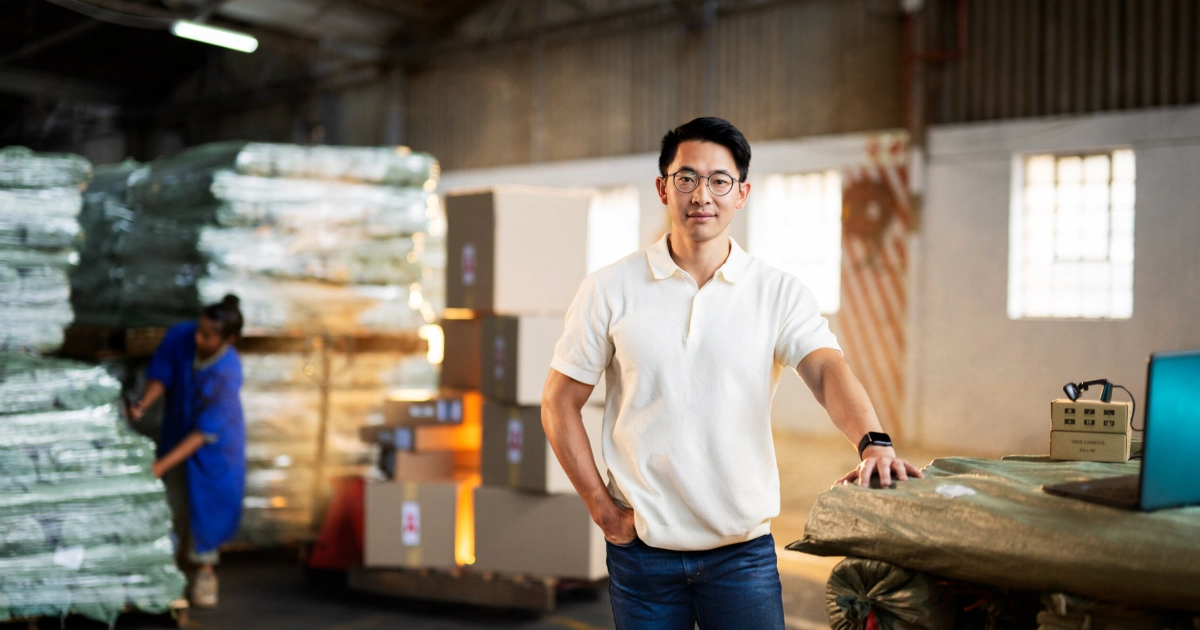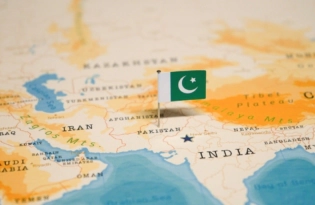How SMEs Can Leverage Singapore’s Free Trade Agreements (FTAs) to Minimize Tariff Costs and Expand Globally
Singapore’s 27 FTAs are a major but underused advantage for SMEs. Agreements like the RCEP connect Singapore to 14 markets with preferential trade terms, reducing costs and easing market entry. Many SMEs assume FTAs only benefit large companies, but they often provide even greater value to smaller businesses that take the time to use them.

Table of contents
Singapore’s network of 27 Free Trade Agreements (FTAs) represents one of the most underutilized tools in the SME toolkit. While many businesses focus on operational efficiency and market expansion, they often overlook how FTAs can dramatically reduce costs and open up new opportunities. The Regional Comprehensive Economic Partnership (RCEP) alone connects Singapore businesses to 14 other countries with preferential trade terms.
The RCEP provides an extensive network of powerful tools that SMEs can tap into to mitigate trade barriers, reduce costs, and access new markets; however, many businesses aren’t fully capitalizing on them. One barrier that smaller companies face is the assumption that FTAs are designed for large corporations. In reality, these agreements deliver even greater proportional benefits to SMEs that are willing to invest time in understanding them.
While global discussions continue about why trade barriers exist and who pays tariffs, smart Singapore businesses are finding solutions through FTAs. Understanding how tariffs work within these agreements can mean the difference between paying full duties and accessing preferential rates that elevate your competitive position.
Singapore’s Strategic FTA Network
With access to 27 Free Trade Agreements covering 90% of Singapore’s trade, SMEs have unprecedented opportunities to optimize their global operations amid shifting trade policies.
FTA Landscape Overview
Singapore’s comprehensive FTA network forms a bedrock for business growth. These agreements span ASEAN, the EU, the U.S., China, Japan, and emerging markets, including those in Latin America and the Middle East.
Recent developments continue expanding this network. The Singapore-UK FTA ensures continued preferential access post-Brexit. RCEP creates opportunities across the Asia-Pacific region. Ongoing negotiations with Mercosur member states (Argentina, Brazil, Paraguay, and Uruguay) open doors to Latin American markets.
Strategic Advantages for SMEs
Trading companies dealing in machinery and commodities can leverage the EU-Singapore FTA which eliminates duties on many industrial goods. Corporate services providers and IT firms benefit from enhanced market access provisions, while digital marketing agencies can tap into cross-border data flow allowances that facilitate seamless service delivery across borders.
Understanding How FTAs Create Business Advantage
FTAs offer concrete financial and operational benefits that directly impact SMEs’ bottom lines and competitive positioning.
Tariff Cost Reduction Mechanisms
Rules of origin ensure that only genuine products from FTA partners receive preferential treatment. For businesses that see the true cost of a trade tariff, the importance of such rules becomes obvious.
Calculating savings begins by identifying your product’s classification code and reviewing tariff schedules. A furniture exporter might discover that products typically face 20% EU duties, but 0% under the FTA. On $500,000 worth of annual exports, that’s $100,000 saved.
Documentation requirements vary by agreement but share certain commonalities, including certificates of origin, supplier declarations, and accounting segregation. Investing in systems to meet FTA requirements can yield dividends in the form of sustained savings.
Beyond Tariffs: Additional FTA Benefits
Intellectual property protections safeguard innovations across borders. Government procurement opportunities open billion-dollar markets traditionally closed to foreign suppliers. FTAs ensure Singapore companies can bid on government contracts on equal footing with local firms.
Investment protections offer recourse in the event of problems arising. While SMEs hope never to need these provisions, their existence enables confident market entry.
Strategic FTA Selection for Different Business Models
Different business models can strategically leverage specific FTAs to maximize competitive advantage.
Trading Companies (Machinery, Commodities, and Goods)
Trading companies must carefully navigate origin requirements when sourcing products. For machinery traders, the ASEAN-China FTA enables preferential rates when trading equipment between regional partners. Commodity traders benefit from streamlined documentation under RCEP, reducing paperwork for shipments across 15 member countries.
Singapore’s strategic location allows traders to leverage “transhipment provisions” in many FTAs, where goods can pass through Singapore while maintaining preferential status. Supply chain mapping helps identify opportunities to source from FTA partners while maintaining competitive pricing. For instance, a machinery trader importing from Germany to sell to Australia can utilize both the EU-Singapore FTA and the Singapore-Australia FTA to minimize duties at both ends.
Service and Digital Exporters
Singapore’s Digital Trade Agreement with the EU, concluded in July 2024, establishes binding rules on electronic trade covering computer and information services, telecommunications services, and digital marketing services. With 55% of EU-Singapore services trade being digitally delivered ($43 billion), corporate services providers can now offer cloud computing, data analytics, and software development services without regulatory barriers, while IT service providers benefit from provisions ensuring free data flows and prohibiting data localization requirements.
FTAs also benefit those in the digital economy. Cross-border data flows, professional qualification recognition, and digital trade provisions open markets traditionally protected by barriers. Singapore professionals gain streamlined pathways to practice in FTA countries.
Implementing an FTA Strategy
Successful FTA utilization requires systematic implementation to ensure compliance and maximize benefits.
Internal Processes and Systems
FTA qualification workflows begin with product classification and destination analysis. Creating decision trees streamlines determinations, while standardized templates and systemic record-keeping instill consistency in documentation procedures.
Staff training multiplies benefits across organizations. When sales teams understand preferential access, they can position products competitively. Similarly, when procurement understands origin requirements, it can make qualifying sourcing decisions.
External Partnerships
Customs brokers offer specialized FTA documentation expertise, allowing SMEs to access benefits without hiring in-house trade compliance staff. Collaborating with suppliers to meet origin requirements creates mutual benefits through shared FTA advantages.
Enterprise Singapore continues to provide targeted assistance for SMEs utilizing FTAs through various support schemes, including FTA & Trade Compliance Consultancy services under the Market Readiness Assistance (MRA) Grant, which covers up to 50% of eligible costs. The agency maintains a list of approved FTA and trade compliance consultants to help businesses navigate customs compliance, export controls, and product classification requirements.
Cross-Border Payment Optimization
SMEs can leverage Singapore’s robust financial infrastructure to capitalize on FTA opportunities and manage multi-market operations.
Managing currencies across FTA partners becomes crucial as businesses expand. Each agreement potentially introduces new currency exposure. Without the proper infrastructure, this complexity can quickly offset savings.
Streamlining payment acceptance removes friction while enhancing competitive advantages. Even when tariff savings make products price-competitive, sales may still be lost through complicated payment processes. The solution is to reduce transaction costs to preserve margins gained through preferential access.
Payoneer’s Role in FTA Utilization
When Singapore SMEs enter new markets through FTAs, payment infrastructure becomes as important as tariff savings. Payoneer enables businesses to receive payments in up to 10 currencies without the need for opening local bank accounts, thereby eliminating payment frictions.
This capability proves especially valuable when FTA benefits make products price-competitive in new markets. By providing local receiving accounts in multiple currencies, businesses can offer familiar payment methods to international customers, accelerating sales cycles and building trust.
The platform’s multi-currency accounts allow SMEs to hold funds strategically, timing conversions to optimize exchange rates. This flexibility helps preserve the margin advantages gained through FTA tariff savings, ensuring financial operations support rather than constrain growth across trade corridors.
Payoneer’s Request a Payment service further enhances this flexibility by allowing businesses to send professional payment requests to international clients. This feature offers multiple payment options to customers, automated reminders for outstanding invoices, and real-time tracking of payment status – transforming the traditionally complex process of international invoicing into a streamlined operation that complements FTA benefits.
Singapore SMEs Winning with FTAs
Singapore trading companies have seen significant success leveraging FTAs. Machinery traders utilizing the China-Singapore FTA eliminate up to 95% of tariffs on equipment exports to China, enabling substantial cost savings on high-volume shipments.
Corporate services providers are expanding rapidly under digital trade provisions – IT consultancies now serve EU clients without establishing local entities, thanks to mutual recognition of professional qualifications. Digital marketing agencies leverage cross-border data flow provisions to manage campaigns across multiple markets from their Singapore base, streamlining operations and reducing compliance costs. With Singapore’s position as the world’s most innovative country, these service providers compete effectively on the global stage through strategic FTA utilization.
Conclusion: Building a Sustainable Global Footprint
By combining Singapore’s FTA advantages with modern financial tools like Payoneer, SMEs build resilient global operations capable of thriving despite shifting trade policies. Success requires understanding agreements, implementing effective systems, and maintaining infrastructure that supports multi-market operations.
The path forward involves strategically selecting and implementing FTAs that align with business objectives. With Singapore’s extensive FTA network, SMEs have everything they need to transform trade agreements into engines of growth.
Related resources
Latest articles
-
How to hire employees in Ireland
Looking to hire employees in Ireland for your US company? Learn about employment in Ireland and how Payoneer Workforce Management makes it easy to hire in Ireland.
-
Planning to hire employees in Indonesia? Here’s a quick guide
Are you looking to hire employees in Indonesia? Learn about hiring in Indonesia and how Payoneer Workforce Management can help American companies hiring in Indonesia.
-
Planning to hire employees in France? Here’s a quick guide
Looking to hire employees in France for your U.S. company? Learn about employment in France and how Payoneer Workforce Management makes it simple to hire in France.
-
Planning to hire employees in Spain? Here’s a quick guide
Are you looking to hire employees in Spain? Learn about employment in Spain and how Payoneer Workforce Management can help American companies hiring in Spain.
-
How to hire employees in the Netherlands
Looking to hire employees in the Netherlands for your U.S. company? Learn about employment in the Netherlands and how Payoneer Workforce Management can help hire in the Netherlands.
-
How to hire employees in Australia
Looking to hire employees in Australia for your US company? Learn about employment in Australia and how Payoneer Workforce Management makes it easy to hire in Australia.
Disclaimer
Nothing herein should be construed as if Payoneer Inc. or its affiliates are soliciting or inviting any person outside the jurisdiction where it operates/is licensed to engage in payment services provided by Payoneer Inc. or its affiliates, unless permitted by applicable laws. Any products/services availability are subject to customer’s eligibility. Not all products/services are available in all jurisdictions in the same manner. Depending on your eligibility, you may be offered with the Corporate Purchasing Mastercard, issued by First Century Bank, N.A., under a license by Mastercard® and provided to you by Payoneer Inc., or the Payoneer Business Premium Debit Mastercard®, issued and provided from Ireland by Payoneer Europe Limited under a license by Mastercard. The Payoneer Business Premium Debit Mastercard® cannot be used at merchants or ATMs in Hong Kong or for HKD payments. If you are located in the EEA, all Payoneer Services will be provided to you by Payoneer Europe Limited, trading as Payoneer and regulated by the Central Bank of Ireland.
The information in this document is intended to be of a general nature and does not constitute legal advice. While we have endeavored to ensure that the information is up to date and correct, we make no representations or warranties of any kind, express or implied, about the completeness, accuracy, reliability or suitability of the information. In no event will we be liable for any loss or damage including without limitation, indirect or consequential loss or damage, or any loss or damage whatsoever incurred in connection with the information provided.













